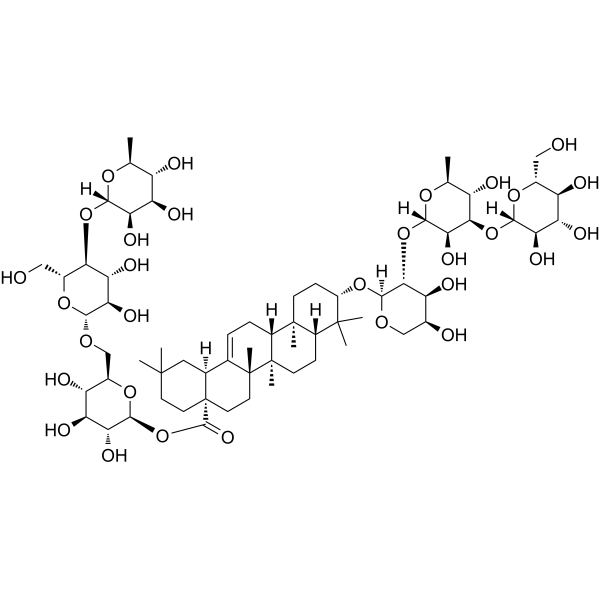
Beesioside Q
CAS No. 261767-91-3
Beesioside Q( —— )
Catalog No. M29591 CAS No. 261767-91-3
Beesioside Q is a natural product extracted from the rhizome of Beesia calthaefolia (Maxim.) Ulbr.
Purity : >98% (HPLC)
 COA
COA
 Datasheet
Datasheet
 HNMR
HNMR
 HPLC
HPLC
 MSDS
MSDS
 Handing Instructions
Handing Instructions
| Size | Price / USD | Stock | Quantity |
| 5MG | 653 | Get Quote |


|
| 10MG | 972 | Get Quote |


|
| 25MG | 1431 | Get Quote |


|
| 50MG | 1953 | Get Quote |


|
| 100MG | Get Quote | Get Quote |


|
| 200MG | Get Quote | Get Quote |


|
| 500MG | Get Quote | Get Quote |


|
| 1G | Get Quote | Get Quote |


|
Biological Information
-
Product NameBeesioside Q
-
NoteResearch use only, not for human use.
-
Brief DescriptionBeesioside Q is a natural product extracted from the rhizome of Beesia calthaefolia (Maxim.) Ulbr.
-
DescriptionBeesioside Q is a natural product extracted from the rhizome of Beesia calthaefolia (Maxim.) Ulbr.
-
In Vitro——
-
In Vivo——
-
Synonyms——
-
PathwayOthers
-
TargetOther Targets
-
Recptor——
-
Research Area——
-
Indication——
Chemical Information
-
CAS Number261767-91-3
-
Formula Weight1367.533
-
Molecular FormulaC65H106O30
-
Purity>98% (HPLC)
-
Solubility——
-
SMILES[H][C@]1(CC[C@@]2(CC[C@]3(C)[C@]([H])(CC[C@]4([H])[C@@]5(C)CC[C@]([H])(O[C@]6([H])OC[C@]([H])(O[C@]7([H])O[C@]([H])(CO)[C@@]([H])(O)[C@]([H])(O)[C@@]7([H])O)[C@]([H])(O)[C@@]6([H])O[C@]6([H])O[C@@]([H])(C)[C@]([H])(O)[C@@]([H])(O)[C@@]6([H])O)C(C)(C)[C@]5([H])CC[C@]34C)[C@@]12[H])C(=O)O[C@]1([H])O[C@]([H])(CO[C@]2([H])O[C@]([H])(CO)[C@@]([H])(O[C@]3([H])O[C@@]([H])(C)[C@]([H])(O)[C@@]([H])(O)[C@@]3([H])O)[C@]([H])(O)[C@@]2([H])O)[C@@]([H])(O)[C@]([H])(O)[C@@]1([H])O)C(C)=C
-
Chemical Name——
Shipping & Storage Information
-
Storage(-20℃)
-
ShippingWith Ice Pack
-
Stability≥ 2 years
Reference
molnova catalog



related products
-
Milbemycin oxime
Milbemycin oxime is a veterinary drug from the group of milbemycins, used as a broad spectrum antiparasitic.
-
Iopromide
Iopromide is a molecule used as a contrast medium. It is marketed under the name Ultravist which is produced by Bayer Healthcare.
-
Ursonic Acid
Ursonic acid belongs to the family of Ursane Triterpenes whose structure is based on the pentacyclic ursane skeleton. It has potential as HIV-1 Protease Inhibitor.



 Cart
Cart
 sales@molnova.com
sales@molnova.com


